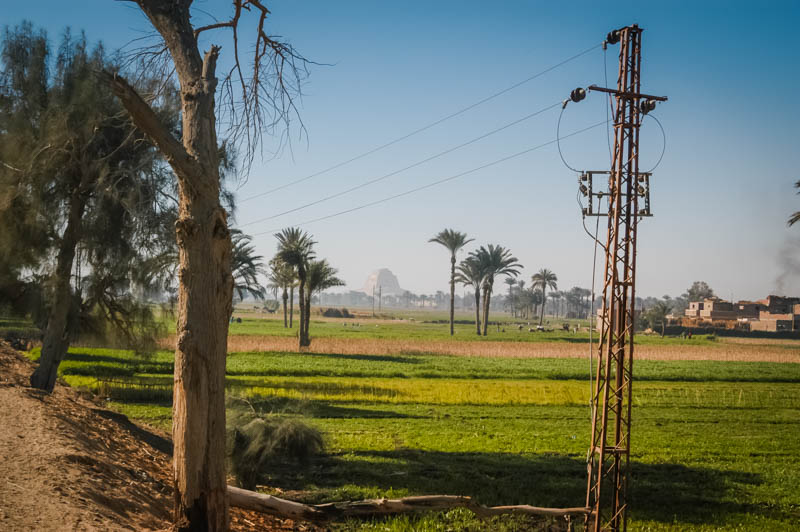The fayoum is the largest oasis in Egypt, and is a popular spot for Egyptians hoping to escape the crowded city. Most of the activity is centered on Lake Qarun, a surprisingly huge lake for a desert oasis. The lake was created by natural flooding about 70,000 years ago and was connected to the Nile by canals in the 12th dynasty to drain some of the marshes for agriculture.
Fayoum is not an oasis in the typical sense — it is not fed by springs from below, but is instead a salt-water lake, about 215 sq km, although it is only 12 meters deep. The water levels have been falling continuously, although the High Dam has stablized the supply of water ot the lake in recent years. Even so, the water is too salty to support any freshwater fish. We did not go swimming — it was still a bit cool for any of the hotels ot open their private beaches (well, too cool for the Egyptians!), but I have been told that it is like swimming in the Dead Sea on a small scale.
Note that it is possible for tourists to swim in the lake — it is declared free of the horrid little creature that causes bilharzia. There is also a daily camel market (early in the morning) that can be a hoot. We were a bit too early, but ask for the Birqash Camel Market for an interesting experience.
The city of Fayoum (Medinat el-Fayoum) is a fairly unappetizing place, to be honest, but the coast is nice. It’s being overbuilt tremendously with new spiffy hotels and remains lined with older, more shabby hotels. We had lunch at the Auberge du Lac, which boasts a beautiful view.

We saw the Maidum pyramid site here, which includes